Always remember that the crowd which applauds your coronation is the same crowd that will applaud your beheading. People like a show.
Going Postal, Terry Pratchett
If you’re here because you’ve been assigned to write an essay on emperors, be sure to double check which emperor you’re meant to be writing about.

A BRIEF HISTORY OF THE EMPEROR’S NEW CLOTHES
Although this is an original tale published by Hans Christian Andersen rather than one based on the oral tradition, Andersen still borrows a lot from the oral tradition. So it feels almost like it might have been an older tale.
Libro de los ejemplos (or El Conde Lucanor, 1335), a medieval Spanish collection of fifty-one cautionary tales with various sources such as Aesop and other classical writers and Persian folktales, by Juan Manuel, Prince of Villena (1282–1348). Andersen did not know the Spanish original but read the tale in a German translation titled “So ist der Lauf der Welt”.
Wikipedia
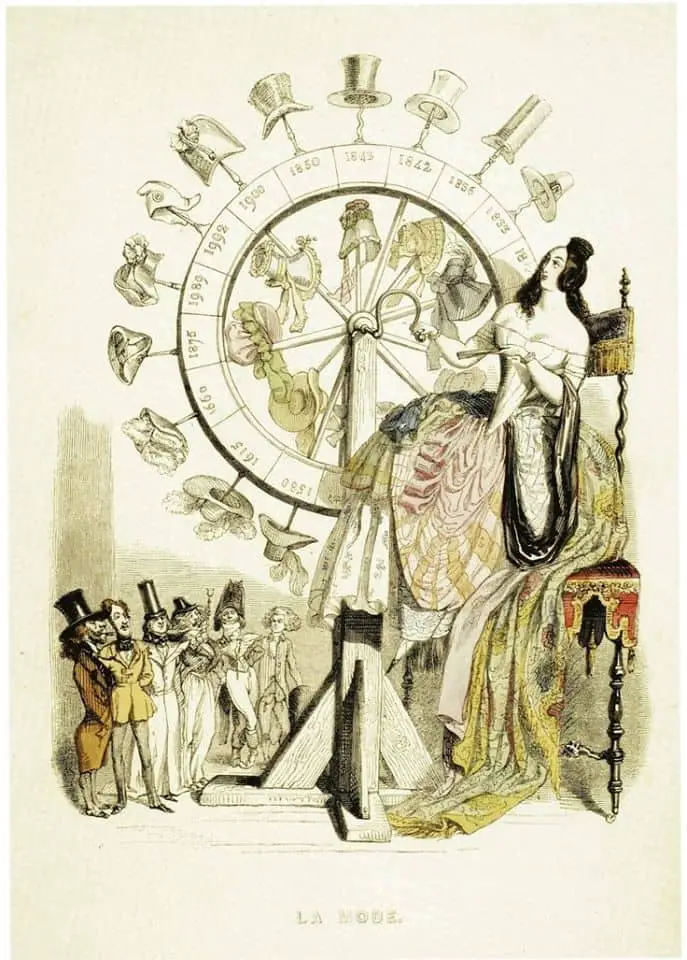
The Emperor’s New Clothes has been translated into over 100 languages, inspired lots of other stories, become a metaphor for lack of substance, and is known around the world. https://www.youtube.com/watch?v=_RXwe-v72rE
Sigmund Freud used “The Emperor’s New Clothes” as an example when discussing a common dream — the dreamer is naked and ashamed; onlookers are not bothered. In The Interpretation of Dreams, Freud basically argues that nakedness corresponds to exhibitionism:
The dreamer’s embarrassment and the spectator’s indifference [towards the dreamer’s dreamed nakedness] constitute a contradiction such as often occurs in dreams. It would be more in keeping with the dreamer’s feelings if the strangers were to look at him in astonishment, or were to laugh at him, or be outraged. I think, however, that this obnoxious feature has been displaced by wish-fulfilment while the embarrassment is for some reason retained, so that the two components are not in agreement. We have an interesting proof that the dream which is partially distorted by wish-fulfilment has not been properly understood; for it has been made the basis of a fairy tale familiar to us all in Andersen’s version of “The Emperor’s New Clothes,” and it has more recently received poetical treatment by Fulda in “The Talisman”. In Andersen’s fairy tale we are told of two impostors who weave a costly garment for the Emperor, which shall, however be visible only to the good and true. The Emperor goes forth clad in this invisible garment, and since the imaginary fabric serves as a sort of touchstone, the people are frightened into behaving as though they did not notice the Emperor’s nakedness.
for the rest see here
But in The Forgotten Language, Erich Fromm counters Freud’s interpretation, because nakedness can mean many things other than exhibitionism:
Being clothed can stand for the expressions of thoughts and feelings which others expect us to have while they actually are not ours. The naked body can thus symbolise the real self; the clothes can symbolise the social self that feels and thinks in terms of the current cultural pattern. If someone dreams of being naked, the dream may express his wish to be himself, to give up pretence, and his embarrassment in the dream may reflect the fear he has of the disapproval of others if he dares to be himself.
Erich Fromm, The Forgotten Language
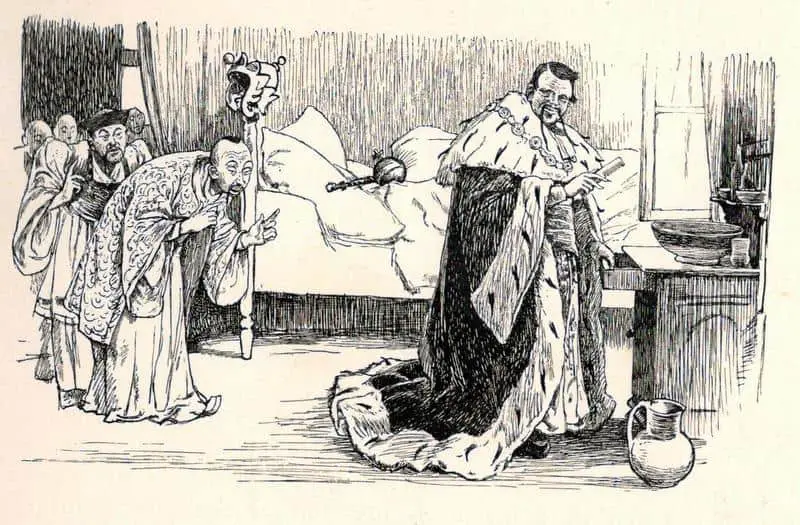
SETTING OF “THE EMPEROR’S NEW CLOTHES”
This tale along with:
- The Nightingale
- The Bell
- The Snow Queen
is about the administrative changes taking place in Denmark 1820s-30s. This is the era in which Denmark put an end to aristocratic privilege. As Maria Tatar writes, “older bureaucrats, in an effort to retain their positions, joined forces with their younger colleagues in the reform movements sweeping Europe.” All of these stories mock the grandiose titles given to ordinary people — titles designed entirely to elevate their position.
Maria Tatar speculates that Andersen himself was annoyed with all of this hierarchy because he was never truly accepted. He wasn’t so removed that he refused the honors bestowed upon him, however. Andersen wasn’t exactly a good-looking chap, either, and this may explain partly why he rejected all of this pomp and ceremony.
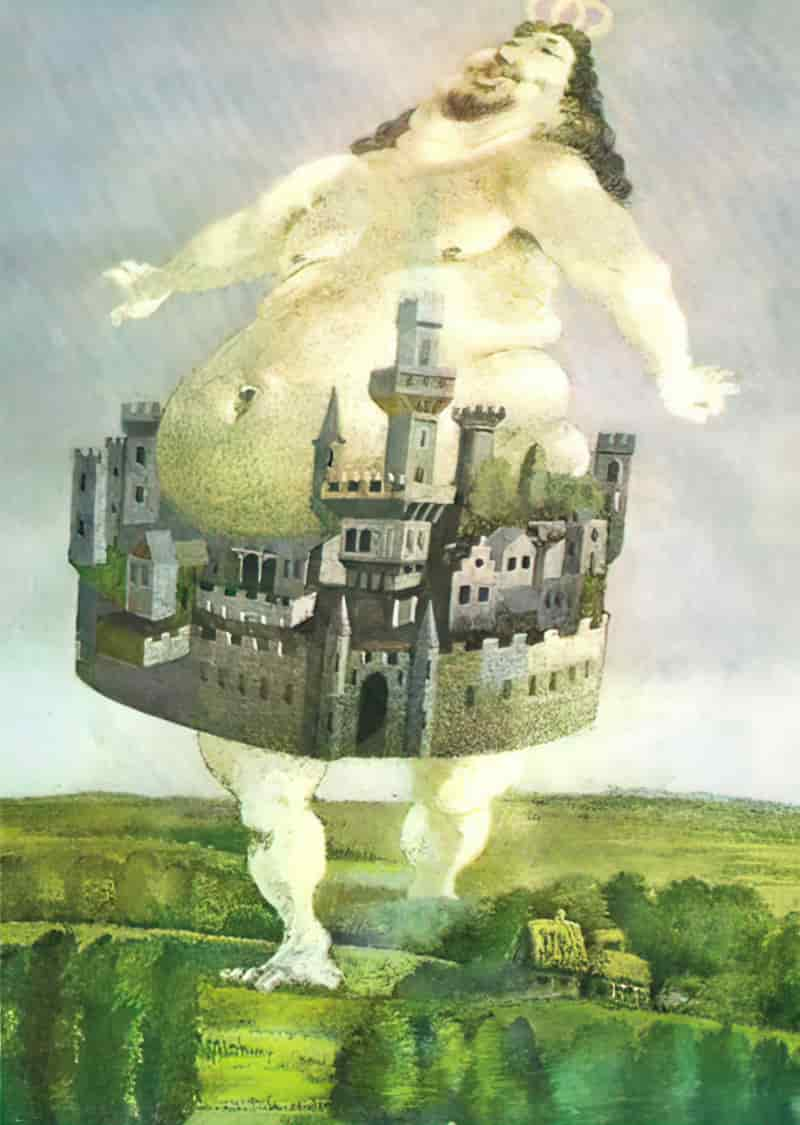
THE CHARACTER OF EMPEROR
My childhood versions of this tale all depict a very full-bodied figure, and I had therefore remembered the image of a man who lies around all day eating food brought to him by servants. (Because in fairy tales we are lead to believe that obesity correlates 1:1 with greed and sloth.) But now that I look at other more diverse depictions of the Emperor, I see that not all illustrators have drawn him as such. The image below, illustrated by Harry Clarke around the 1920s, depict a man described by Maria Tatar as ‘effete’. This is by any standards a ‘feminine’ (or effeminate) pose, subconsciously linking narcissism with the superficiality of femininity.
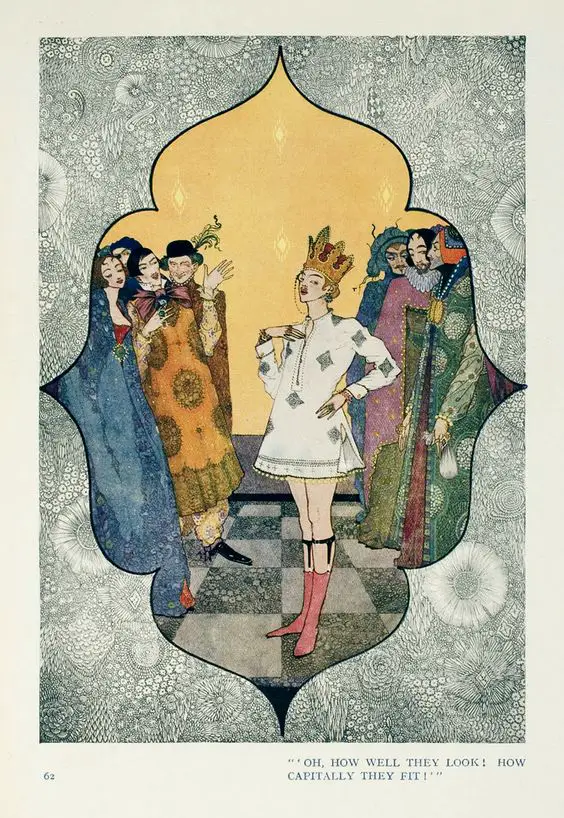
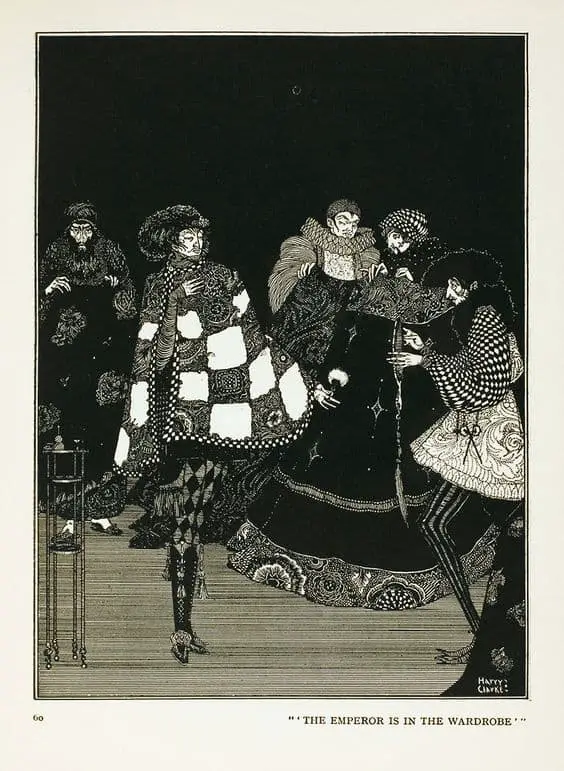
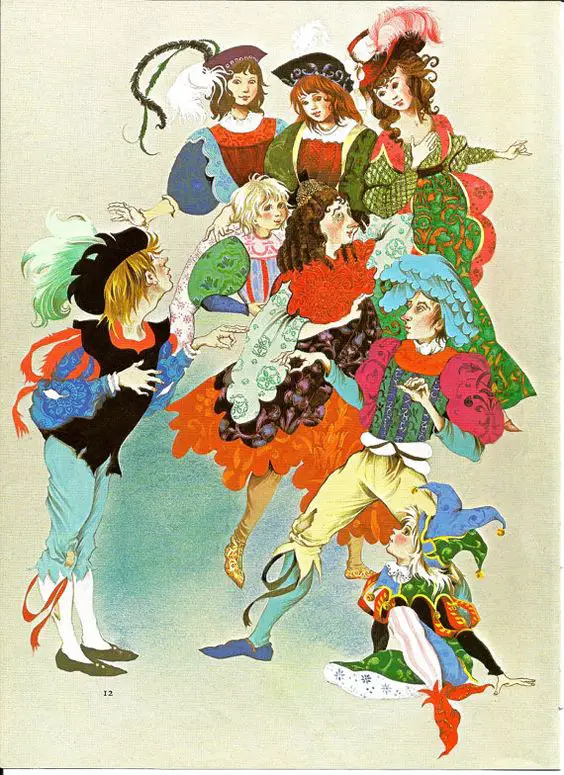
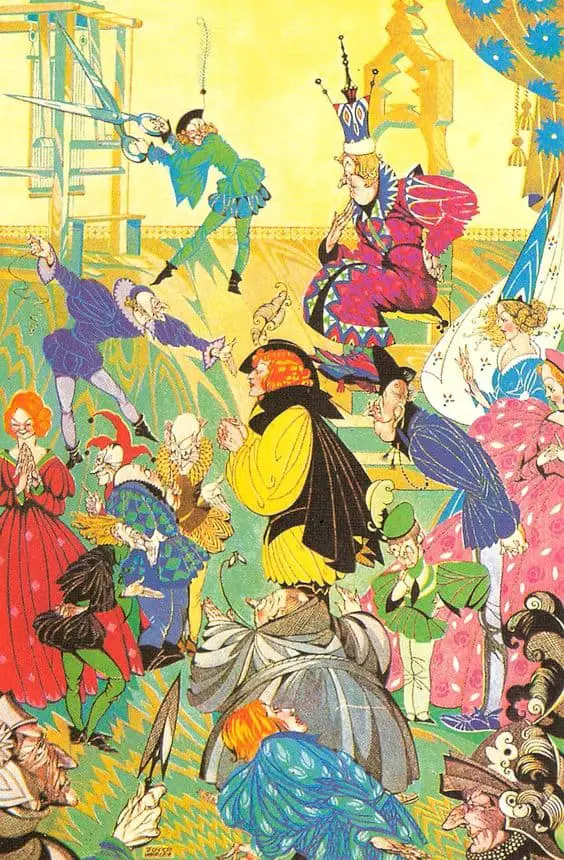
The latter half of the twentieth century, gives us more obese Emperors, and I can only guess at the cultural reasons for this. Either way: take your pick of subtle messages of censure. The vices embodied by the Emperor are most often either tied to femme phobic shortcomings or to obesity and overweight.
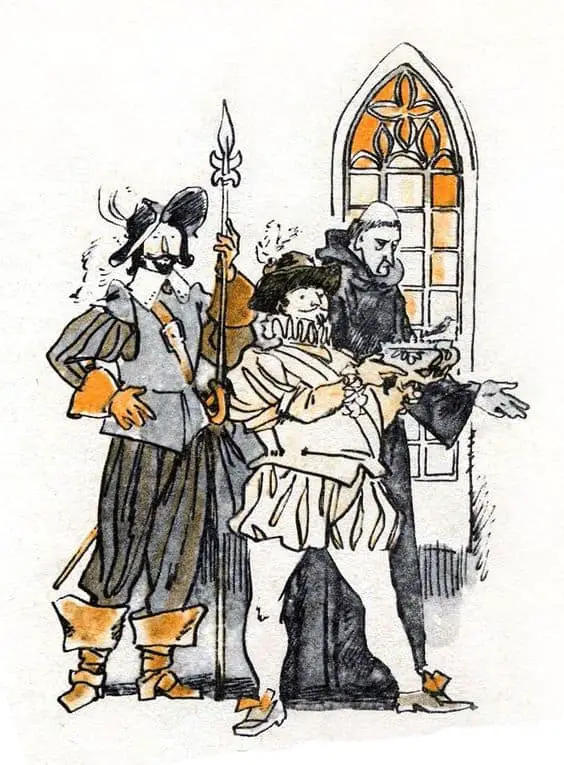
However, this isn’t always the case. Here we have a regular guy:
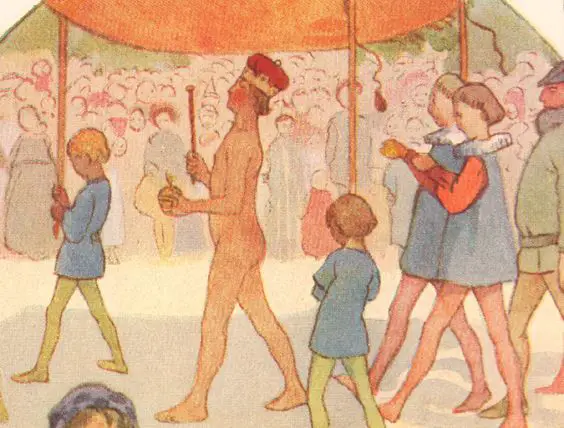
The fact is, it is so much fun for illustrators to ham up the femininity and ostentatiousness of this unpleasant and foolish character.
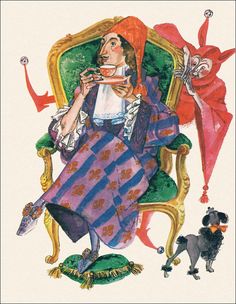
Modern illustrations often seem to be a parody of gay masculinity. But this was written in an age when homosexuality was invisible. I believe Andersen was aiming simply for a ‘fop’:
Fop became a pejorative term for a foolish man excessively concerned with his appearance and clothes in 17th-century England. Some of the very many similar alternative terms are: “coxcomb”, fribble,”popinjay” (meaning “parrot”), fashion-monger, and “ninny”. “Macaroni” was another term, of the 18th century, more specifically concerned with fashion.
A modern-day fop may also be a reference to a foolish person who is excessively concerned about his clothing, luxuries, minor details, refined language and leisurely hobbies. He is generally incapable of engaging in conversations, activities or thoughts without the idealism of aesthetics or pleasures.
The word “fop” is first recorded in 1440, and for several centuries just meant a fool of any kind.
Wikipedia
The fop is more related to the modern goth (for its shared androgyny) than to gay subculture. It is still interesting, however, that ‘androgyny’ seems to mean affectation of feminine body language in so many cases, rather than the other way around — probably because male body language is the ‘normal’, unmarked version, and because the Emperor is himself male, so in order to appear different and interesting he needs to behave in marked fashion in the illustrations.
We tend to modify our body language according to our dress. There are numerous studies about how girls’ clothing stops them from running around as much as same-aged boys, for example. Numerous illustrations of an effete Emperor lead me to wonder if the ostentatious masculine fashions of the early 1800s indeed lead to body language we would now describe as effeminate, or if those men, even dressed in their high heels and wigs and plastered in make-up, behaved just as manly men behave today, striding along with large steps, closing doors noisily behind them, man-spreading on horse-drawn carts.
STORY STRUCTURE OF “THE EMPEROR’S NEW CLOTHES”
SHORTCOMING
The Emperor has a number of shortcomings:
Psychological — he needs to be surrounded by sycophants and adored by the public. He is shallow, possibly narcissistic. Easily duped.
Moral — he judges others’ competence based on what they look like.
DESIRE
He wants to look lovely in the eyes of his public and thereby win their respect.
OPPONENT
The two swindlers, who are classic tricksters of the common fairytale archetype. These swindlers are much smarter than anyone in the town.
PLAN
The Emperor plans to have two tailors make the most magnificent garment so he can parade in front of all his people.
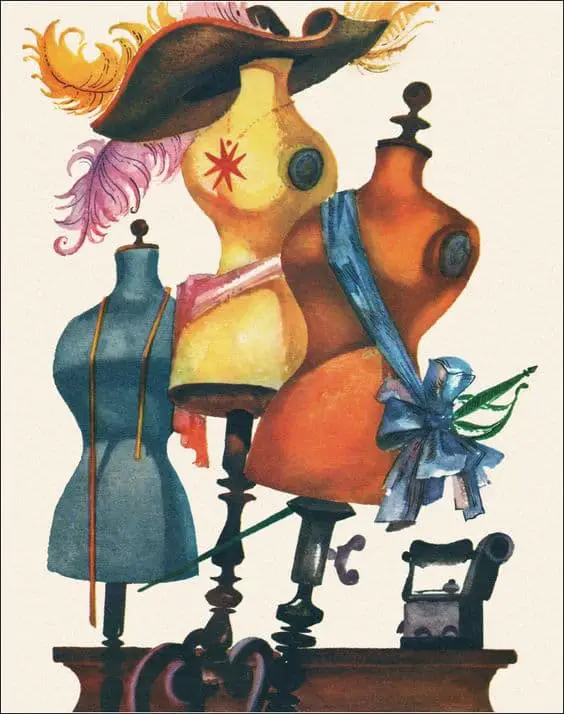
BIG STRUGGLE
The big struggle scene is the parade itself, when the reality of the nakedness is up against the clear-eyed innocence of a child.
ANAGNORISIS
The child has a complete revelation and this spreads throughout the crowd.
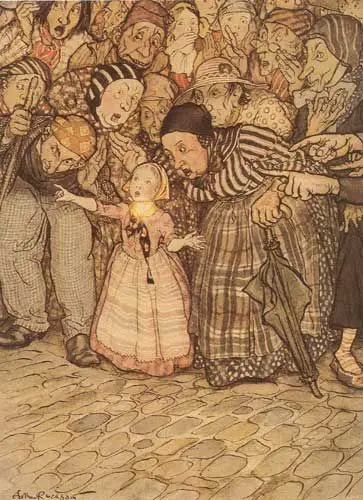
There is a partial anagnorisis on the part of the Emperor when he sees people whispering that he is naked.
NEW SITUATION
The Emperor continues on anyway, because he has no choice.
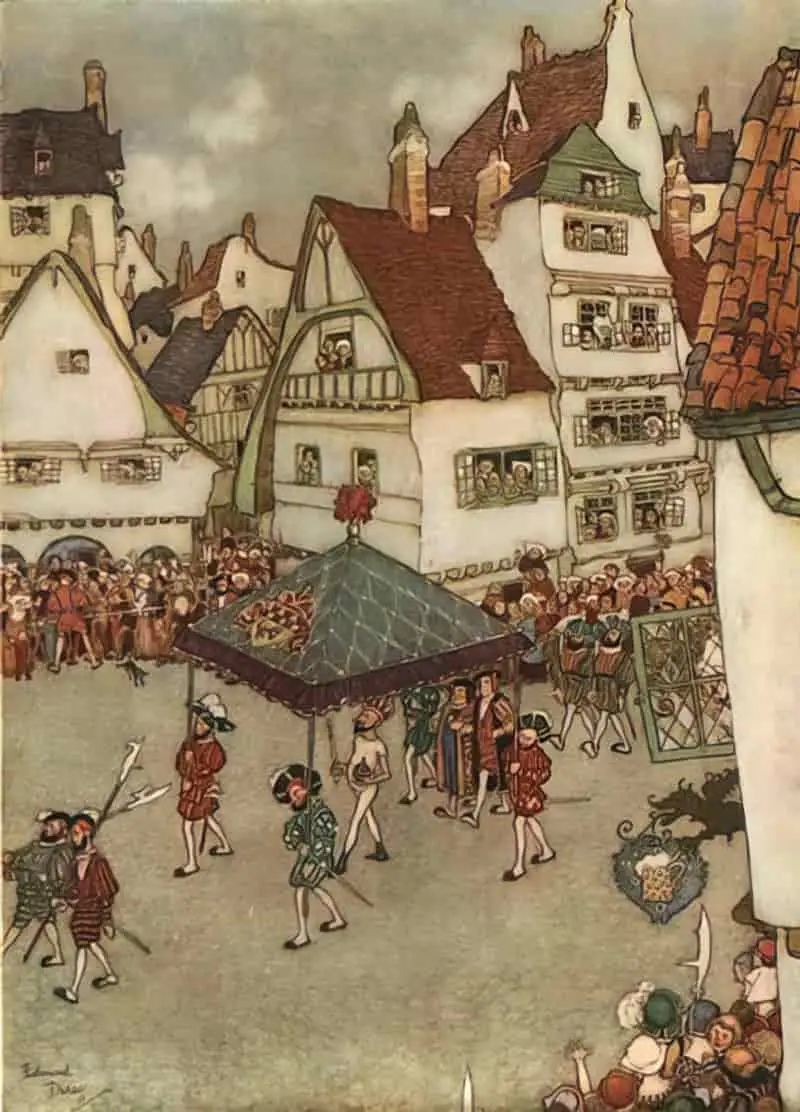
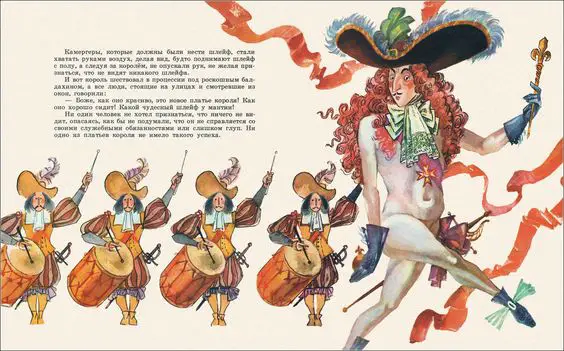
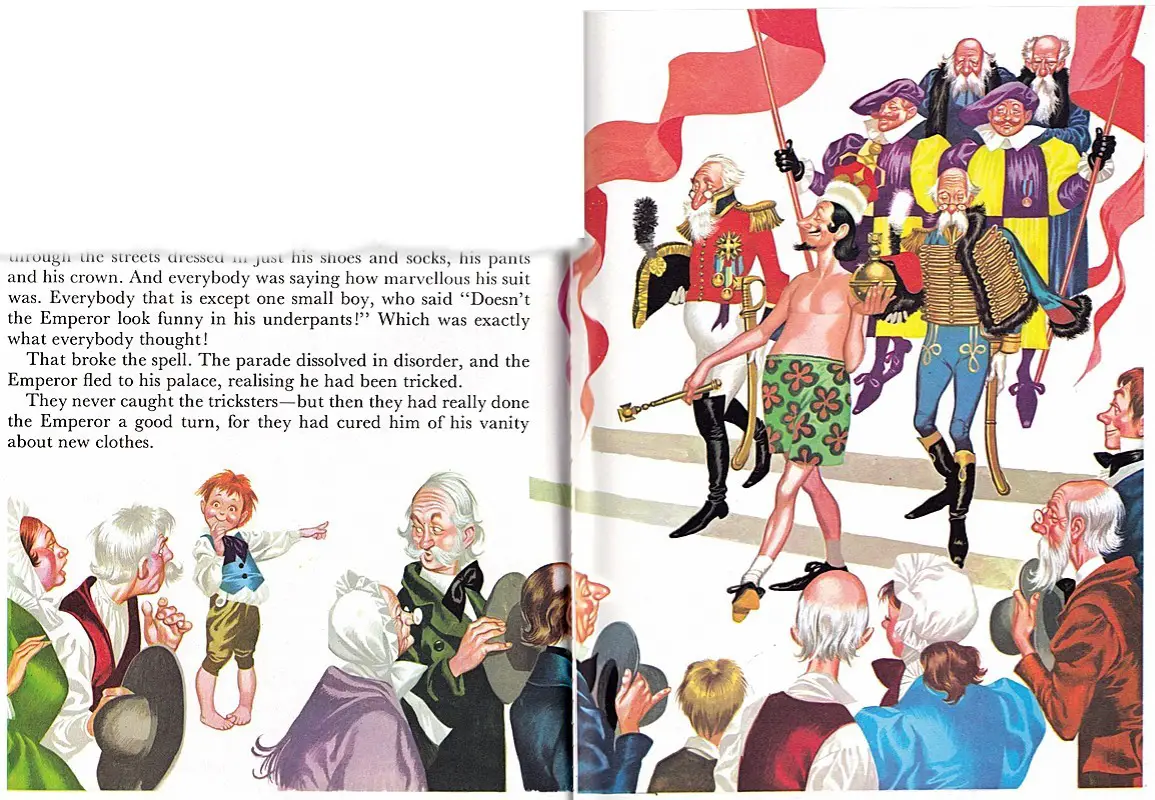
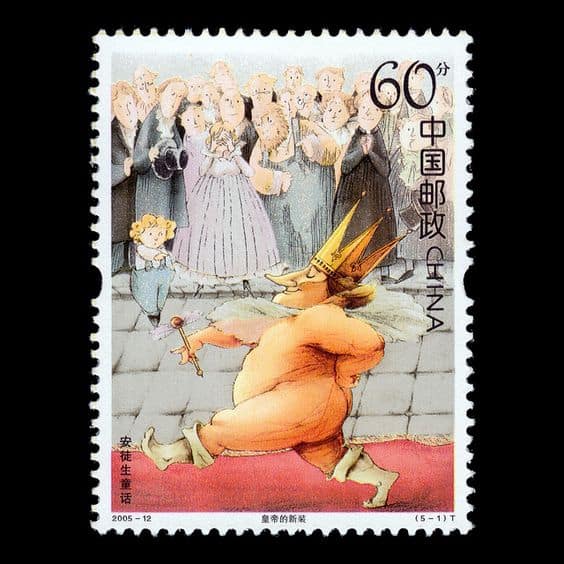
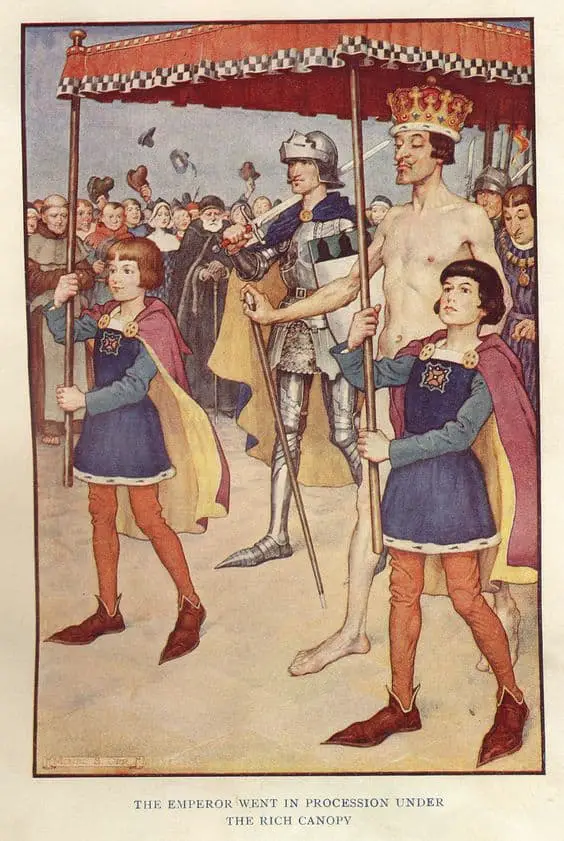
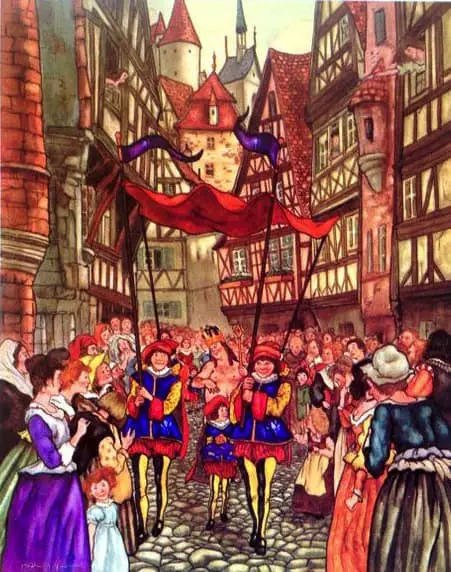
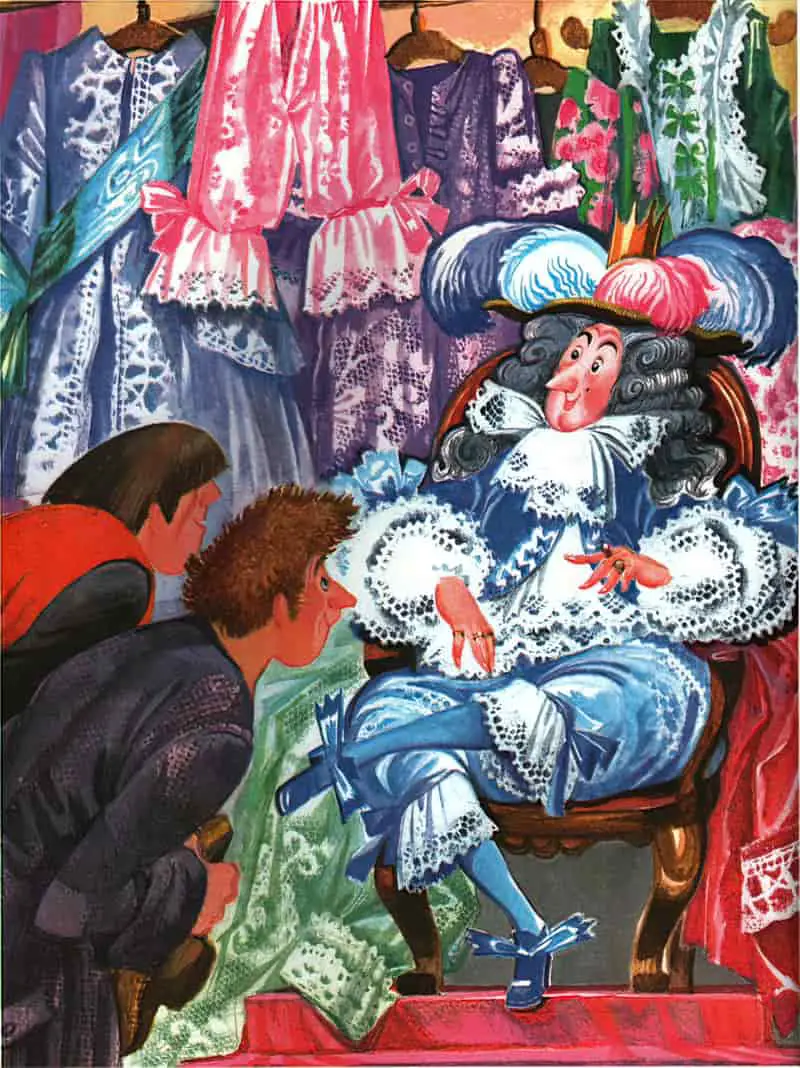
Have you ever wondered what happened to the town after that, though? I wonder if the Emperor continued to rule the land with quite the same authority as he had before. For those who would like to know what the new situation is like, we can go to the original Spanish version. In this story, the king is forced to admit his foolishness.

